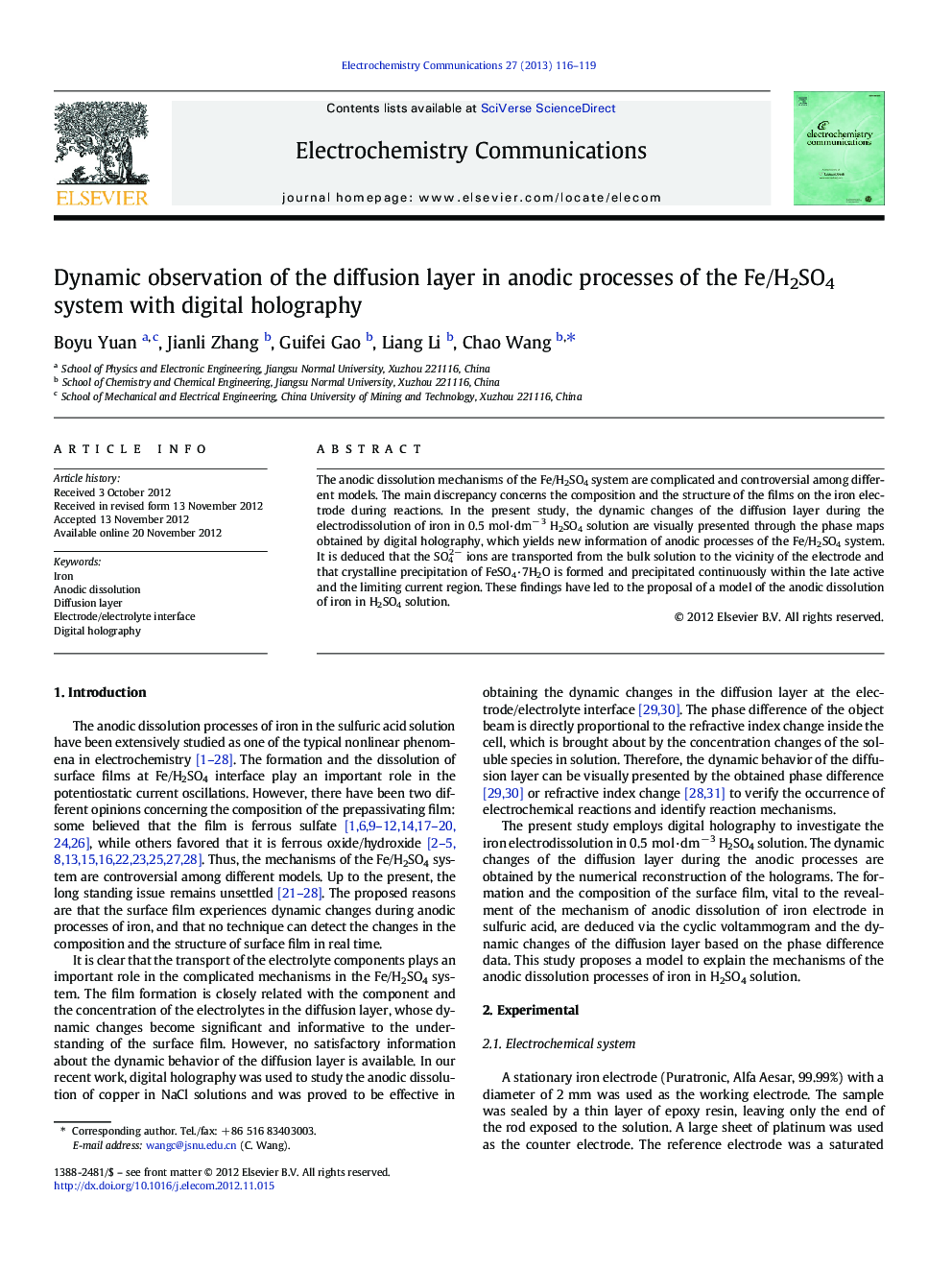| Article ID | Journal | Published Year | Pages | File Type |
|---|---|---|---|---|
| 179547 | Electrochemistry Communications | 2013 | 4 Pages |
The anodic dissolution mechanisms of the Fe/H2SO4 system are complicated and controversial among different models. The main discrepancy concerns the composition and the structure of the films on the iron electrode during reactions. In the present study, the dynamic changes of the diffusion layer during the electrodissolution of iron in 0.5 mol·dm− 3 H2SO4 solution are visually presented through the phase maps obtained by digital holography, which yields new information of anodic processes of the Fe/H2SO4 system. It is deduced that the SO42 − ions are transported from the bulk solution to the vicinity of the electrode and that crystalline precipitation of FeSO4·7H2O is formed and precipitated continuously within the late active and the limiting current region. These findings have led to the proposal of a model of the anodic dissolution of iron in H2SO4 solution.
Graphical abstractTwelve snapshots of computer-processed phase maps at different times during the process of the anodic electrodissolution of iron in 0.5 mol·dm− 3 H2SO4 solution exhibit the dynamic changes of the diffusion layer. The blues in the maps indicate that the SO42 − ions are transported towards the electrode surface from the bulk solution and crystalline precipitation of FeSO4·7H2O is formed and precipitated continuously within the late active and the limiting current region.Figure optionsDownload full-size imageDownload as PowerPoint slideHighlights► The dynamic behavior of the diffusion layer in the Fe/H2SO4 system is visually presented. ► The crystalline precipitation of FeSO4·7H2O is formed and precipitated continuously within the late active region and LCR. ► The layers on the iron during LCR are believed to be Fe(OH)2 film inside and the crystalline form of FeSO4·7H2O outside. ► A model of the anodic process of iron in H2SO4 is proposed.
